On a tour of Ireland, one might easily ask: where are the women? There are statues to a few (we counted just five), a smattering of commemorative plaques, and the Rosie Hackett bridge in Dublin. But most of Ireland's remarkable heroines are invisible.
Perhaps this is because, although there has always been a tradition of casting generals in bronze or chipping them out of marble, a great deal of women’s heroism has always been unsung. Who would ever erect a statue to a nurse? Or a needleworker? In celebration of International Women’s Day, we’re changing that with our own modest proposal: a new map of Ireland, with sites for sculptures, new street names and even a mountain pass.
On our map we have inventors, social reformers, artists, scientists, a pioneering aviator and a mountaineer. There could have been so many more. With one exception, all the women in our list are no longer with us, but all deserve to be celebrated and remembered into the future.
Illustrations by Dearbhla Kelly
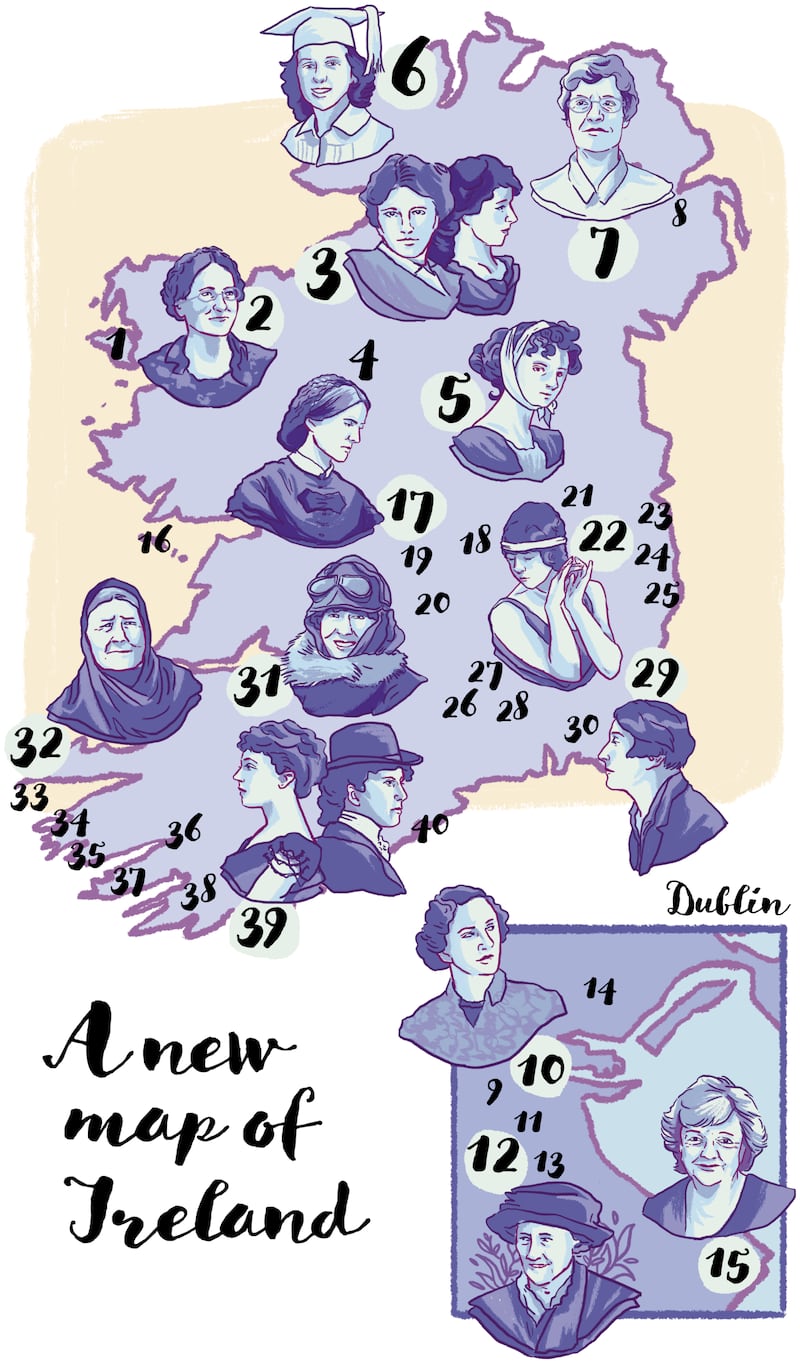
1. Cesca Trench/Sadhbh Trinseach (1891-1918)
Statue, Achill, Co Mayo
Attending the summer school Scoil Acia gatherings on Achill Island promoted the Irish nationalism of the English-born Cesca Trench. She changed her name to Sadhbh Trinseach as she embraced the cause, supporting Irish goods, folklore, the language and the Irish literary revival. Best known for her political cartoons and posters, she joined Cumann na mBan, and delivered first aid during the Easter Rising, which she referred to in her diaries as "a tragic mistake". Her significant art career was cut short on her death, in 1918, from Spanish flu.

2. Kathleen Lynn (1874-1955)
Lynn Station (currently Ballina Station), Co Mayo
Mayo-born Kathleen Lynn became a doctor after seeing sickness and poverty in the west of Ireland. A suffragette, she also supported the workers during the 1913 Lockout and became chief medical officer of the Irish Citizen Army during the Easter Rising. She was imprisoned alongside Constance Markievicz, and her diaries from this period are now available online. Elected vice-president of Sinn Féin in 1917 and a TD for Dublin in 1923, she also cofounded St Ultan's Hospital for Infants.
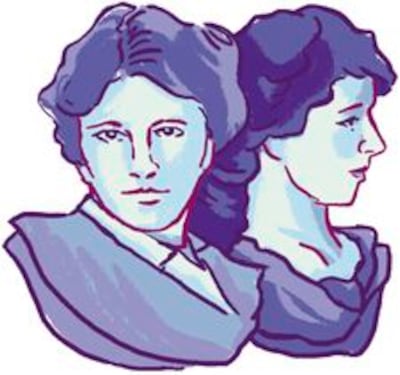
3. Susan Lily Yeats (1866-1949) and Elizabeth Lolly Yeats (1869-1940)
Lily and Lolly Yeats Street (currently Grattan Street), Sligo
Working with the Dun Emer Guild, which pioneered arts and crafts during the Celtic revival, the Yeats sisters specialised in embroidery and printing. They later set up Cuala Press, which published new works including those by their brother WB Yeats, John Millington Synge and Patrick Kavanagh. It was the only arts and crafts press to be run and staffed by women.
4. Queen Medb (pre-Christian era)
Statue, Rathcroghan, Co Roscommon
Queen of Connacht, ruling from Rathcroghan, spouse of numerous husbands, a hero of The Táin; the wild and powerful Medb is the epitome of the warrior queen. She is also the type of woman whom generations of Irish women were told, by both church and State, they could never be. It's not about starting cattle raids; it's about owning the power.
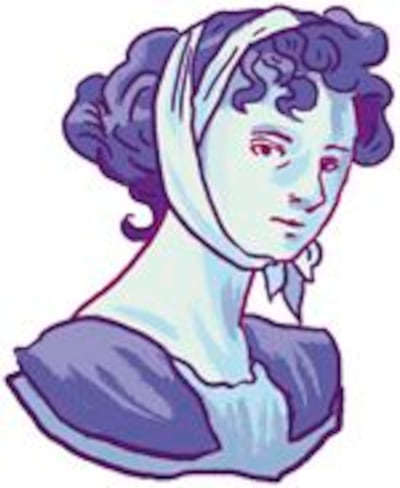
5. Maria Edgeworth (1768-1849)
Statue, Edgeworthstown, Co Longford
You might think Maria Edgeworth wouldn't need a statue, given she shares her name with a town, but, once one of the most celebrated writers of her day, she and her legacy have been largely forgotten. Sir Walter Scott, who has plenty of statues to himself, declared himself in her literary debt. Jane Austen was also an admirer. Castle Rackrent is often credited as the first true historical novel. Edgeworth also held advanced – for her time – social-reforming views on women, education and politics.

6. Kay McNulty Mauchly Antonelli (1921-2006)
Statue, Creeslough, Co Donegal, and McNulty Square, Dublin
Born in Donegal, Kathleen Rita McNulty emigrated with her family to the United States when she was three. A mathematical genius, she calculated ballistics trajectories during the second World War, with the job title "computer". One of the team of six who programmed Eniac, the world's first general-purpose digital computer, she solved a major problem with its functionality. Dublin City University named a building for her, but how about also renaming Grand Canal Square, in Dublin's Silicon Docks?
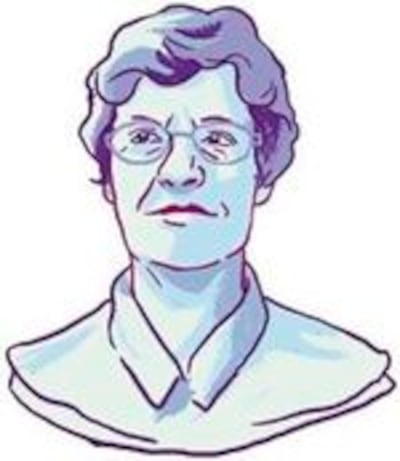
7. Jocelyn Bell Burnell (1943-)
Statue, Lurgan, Co Armagh
When the Lurgan-born astrophysicist Jocelyn Bell Burnell discovered pulsars (radiation-emitting neutron stars), she was notoriously passed over for a Nobel Prize in favour of her thesis supervisor, who had initially dissed her results. Last year she donated her $3 million Breakthrough Prize in Fundamental Physics to support study scholarships. That's some woman.
8. Mary Ann McCracken (1770-1866)
Statue, Belfast
Businesswoman, lover of music, social reformer and abolitionist, Mary Ann McCracken has been overshadowed by her brother, Henry Joy McCracken, executed in 1798. But she worked to revive the oral music tradition of Ireland, was a philanthropist and fundraiser for the poor of Belfast, and led the Women's Abolitionary Committee. Aged 88, she could still be seen at Belfast docks handing out anti-slavery leaflets.
9. Bríg (pre-Christian era)
Bríg Street (currently Grafton Street), Dublin
Knocking the duke of Grafton off his pedestal, or rather renaming Grafton Street in her honour, is no less than Bríg is due. A member of the Tuatha Dé Dannan, and a goddess in her own right, Bríg is most associated with spring and fertility, as well as being patron of medicine, art, cattle and sacred wells. She was known, even by Christian monks, as "the goddess whom poets adored".
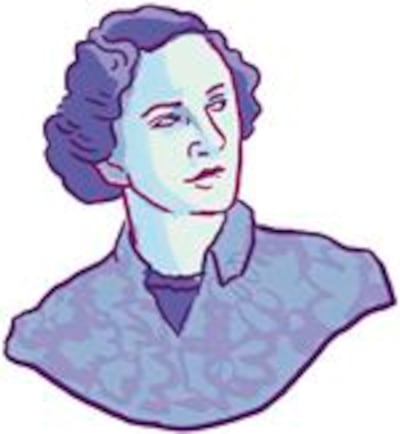
10. Sybil Connolly (1924-1998)
Statue, Merrion Square, Dublin
Famous for dressing Jackie Kennedy and Elizabeth Taylor, Sybil Connolly employed about 100 women during the depressed 1950s. Thanks to another brilliant Irish woman, the Dalkey-born Harper's Bazaar editor Carmel Snow, Connolly took the fashion world by storm from her very first collection. Based on Merrion Square, she never ceased to champion Irish fabrics.
11. Mainie Jellett (1897-1944)
Jellett Square (currently Fitzwilliam Square), Dublin
One of Ireland's first and most interesting abstract artists, Mainie Jellett, who was born at 36 Fitzwilliam Square, pursued her art with a passion. She went to London, and then to Paris, with Evie Hone, to develop her own form of cubism. Renaming a square would be a fitting tribute to Jellett, who wrote that "the art of a nation is one of the ultimate facts by which its spiritual health is judged and appraised by posterity".
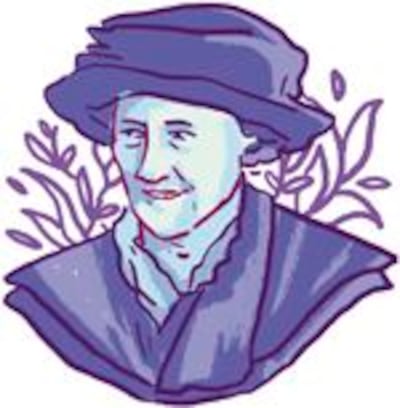
12. Phyllis Clinch (1901-1984)
Statue, Rathgar, Dublin
Phyllis Clinch, who was born in the Dublin suburb of Rathgar, achieved international fame in the 1930s for getting to grips with potato viruses, leading to the creation of disease-free spuds. To a nation scarred by the blight that led to the Famine, this merits a statue at the very least. She also worked on tomatoes and sugar beet, and was one of the first four women to be elected to the Royal Irish Academy.
13. Dorothy Price (1890-1954)
Statue, Clonskeagh, Dublin
A forgotten hero in the TB story, Dorothy Price was pivotal in bringing the BCG vaccine to Ireland. She tried to set up a national anti-tuberculosis league, resisted by the medical profession and the church. She worked tirelessly for more than a decade until Dr Noel Browne became minister for health and took up the cause at government level. Born a Protestant, she also became a member of Cumann na mBan.
14. Veronica Guerin (1958-1996)
Guerin Street, Artane, Co Dublin
In 1995 the award-winning journalist was given the International Press Freedom Award for her dedication to exposing Dublin's organised crime while her life was in danger. A gunman had come to her Artane home and shot her in the leg. Further threats followed. "No hand can deter me from my battle for the truth," she said. A year later she was shot dead in her car.
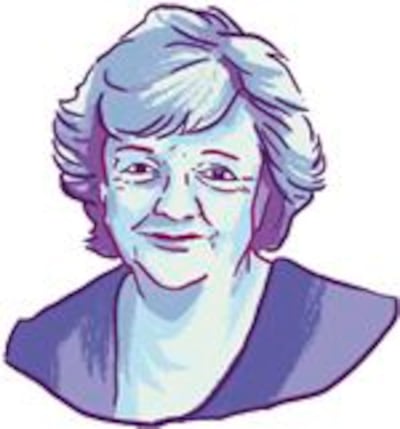
15. Maeve Binchy (1939-2012)
Binchy Street, Dalkey, Co Dublin
The novelist, columnist, editor and playwright Maeve Binchy combined keen observation with a warm wit and a kind and generous eye. Translated into 37 languages, her novels have sold more than 40 million copies, while her columns were a beloved part of this newspaper. Binchy would be best commemorated with a street in her home village of Dalkey that includes a spot where people stop to share the exchanges she so loved to overhear.
16. Elizabeth Rivers (1903-1946)
Statue, Inis Mór, Co Galway
Born in England, Elizabeth Rivers moved to the Aran Islands, where she wrote, engraved and painted. Having studied in Paris, she also worked with Evie Hone on designs for stained glass. Her work offers a unique view of the western landscape, counterbalancing Paul Henry's misty skies. Basil Rakoczi was impressed, saying: "I really think she is a genius mislaid."

17. Mary Ward (1827-1869)
Statue, Ferbane, Co Offaly
Born in Ferbane, home-schooled Mary Ward followed her family's interest in science, and also that of her cousins, the Rosses of Birr Castle. Her sketches would later help with the restoration of the famous telescope there. She studied insects under microscope, making her own slides from slivers of ivory. Her book Sketches with the Microscope was a sellout in its day. In 1869 she gained the dubious distinction of being the first person to be killed by a motor vehicle when she fell from, and was run over by, an experimental steam car developed by her cousins.
18. Johanna Carter (19th century)
Statue, Mountmellick, Co Laois
It's hard to imagine a man whose invention gave employment that saved hundreds of lives during the Famine yet remains unknown. Carter was probably a Quaker, and we do know she ran a small school in Co Laois. Embroidery has been historically dismissed as "women's work", but it and lace provided invaluable employment at the time. Carter used white cotton on white satin jean, taking inspiration from local flowers to create what is now known as Mountmellick Work, an example of which was presented to JFK on his Irish visit in 1963.
19. Mary Rosse (1813-1885)
Statue, Birr, Co Offaly
Lord Rosse tends to get most of the credit for the ground-breaking telescope built at Birr Castle in the 1840s, but fewer people know that his wife, Mary, an accomplished blacksmith, made most of the metal for the construction. An astronomer herself, she also became an award-winning and pioneering photographer, and maintained the employment of more than 500 men during the Famine.
20. Daisy Bates (1859-1951)
Statue, Roscrea, Co Tipperary
Born in Roscrea, Daisy Bates went to Australia for her health. Having heard stories of the mistreatment of the Aboriginal population, she began to live among them, learning their languages and rituals. Her anthropological studies turned to welfare, establishing camps and lobbying the government for protection rights, and medical aid. She also wrote hundreds of articles, some of which are controversial today. Nonetheless, she was a tireless advocate and pioneer.
21. Kathleen Lonsdale (1903-1970)
Statue, Newbridge, Co Kildare
Born in Newbridge, Kathleen Lonsdale had to go to the boys' school to study chemistry, physics and maths. She went on to discover that the benzene ring is flat, and work on the synthesis of diamonds. A pioneer in the field of crystallography, she was one of the first two women to be made a fellow of the Royal Society. Lonsdaleite, a diamond found only in meteorites, is named in her honour.
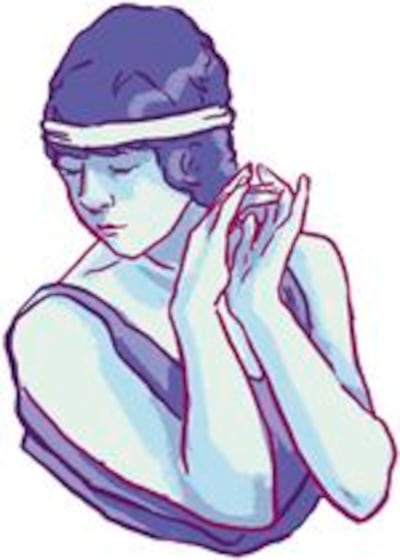
22. Edris Stannus, aka Ninette de Valois (1898-2001)
Statue, Blessington, Co Wicklow
Edris Stannus must have known she was marked for greatness, and was clearly determined to achieve it, when she changed her name to Ninette de Valois. After joining Sergei Diaghilev's groundbreaking Ballets Russes, alongside setting up a ballet school at the Abbey on WB Yeats's invitation, she established England's famous Royal Ballet. She never forgot Ireland, writing in a letter to this newspaper, in support of Joan Denise Moriarty, whose funding had been cut by the Arts Council, "One woman's intelligent effort should not be forgotten or underwritten."
23. Ina Boyle (1889-1967)
Statue, Enniskerry, Co Wicklow
"I think it is most courageous of you to go on with so little recognition. The only thing to say is that it does come finally," Ralph Vaughan Williams wrote to Ina Boyle in 1937. The Enniskerry-born composer's visits to her mentor and champion in London were cut short by the second World War. Her ensuing isolation meant her work was seldom performed, but more recent rediscovery of her powerful and wonderful music is cementing her reputation as one of Ireland's most important composers.
24. Elizabeth Hawkins-Whitshed, aka Lizzie Le Blond (1860-1934)
Mountain Pass, the Wicklow Mountains
Le Blond was born in Greystones, in sight of the Wicklow Mountains, but a move to Switzerland allowed her passion to become a reality. As women mountaineers were pretty unheard of, she climbed in her Edwardian skirts so as not to dismay the men – although she switched to trousers when things got tough. Setting up the Ladies' Alpine Club in 1907, she wrote books on mountain climbing, and conquered 20 peaks that no one had ever climbed before.
25. Máire Comerford (1893-1982)
Statue, Rathdrum, Co Wicklow
Rathdrum-born Máire Comerford was in Dublin during Easter 1916, and carried dispatches for the GPO garrison. A member of Cumann na mBan, she also worked with the White Cross to assist civilian victims of the War of Independence. Central, as a participant or observer, to many of the key moments of the foundation of the Irish State, she spent time in Mountjoy jail following the 1922 Battle of Dublin. She also worked as a journalist for the Irish Press, and left a valuable archive of an extraordinary time.
26. Bridget Cleary (1869-1895)
Statue, Ballyvadlea, Co Tipperary
Clearly somewhat deranged, Bridget Cleary's husband claimed he believed his wife was a changeling, the original having been abducted by fairies. He was convicted of her manslaughter after having burnt her to death. The case became a cause celebre, even featuring in House of Commons arguments against giving Ireland home rule. Her statue should stand as another testament to the dangers of misogyny in all its forms.
27. Alice Kyteler (1263-?)
Statue, Kilkenny
The first woman to be condemned for witchcraft in Ireland, Kilkenny-born Alice Kyteler attracted censorious notice for her wealth, moneylending and four husbands. Would a man have been so investigated? She had powerful friends. When the bishop of Ossory called for her arrest she had him briefly jailed. A drawn-out legal and political battle ensued. Kyteler fled to England and disappeared from history. Kyteler's Inn still stands in Kilkenny.
28. Petronilla de Meath (1300-1324)
Statue, Kilkenny
The first recorded case in Ireland or Britain of death by fire for the crime of heresy, Petronilla de Meath was Alice Kyteler's servant. A victim of misogyny, prejudice, intolerance and the original witch hunt, de Meath was tortured to produce evidence of Kyteler's guilt. After "confessing", de Meath was flogged and burnt at the stake. People remember Kyteler, but de Meath should not be forgotten, and her statue should stand against narrow-mindedness and injustice in all its forms.
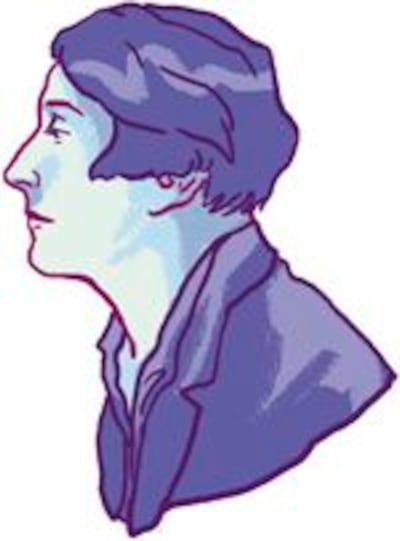
29. Eileen Gray (1878-1976)
Gray's Promenade (currently The Promenade), Enniscorthy, Co Wexford
Architect, furniture designer and modernist icon, Eileen Gray was born in Enniscorthy, where a small exhibition is dedicated to her at Enniscorthy Castle. Largely forgotten for years, her wonderful villa E1027 has more recently been restored and is open to visitors in the south of France, while one of her chairs sold for €22 million at auction in 2009. Cloon Keen's Transat scented candle is also named in her honour.
30. Eileen Flynn (1955-2008)
Flynn's Street (currently Bridge Street), New Ross, Co Wexford
Sometimes it seems as if we have come a long way in Ireland; at others it's shocking how recently things were so different. In 1982 Eileen Flynn was dismissed from her teaching position in New Ross for living with a married (though separated) man. When she became pregnant the school principal, Sr Mary Anna Power, offered to arrange for her to give birth in London and have the child adopted. Flynn refused, and refused to resign. Her unfair-dismissal action was rejected by the High Court. She married her partner the year after divorce was legalised in Ireland.
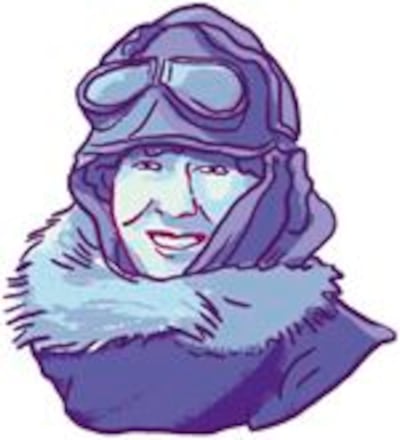
31. Sophie Peirce-Evans, aka Lady Mary Heath (1896-1939)
Statue, Knockaderry, Co Limerick
Getting over a troubled childhood (her father murdered her mother), Limerick-born Sophie Peirce-Evans took a top-class degree in science, was a dispatch rider during the first World War, a champion athlete and the first woman to hold a commercial flying licence. She was also the first recorded woman to do a parachute jump. Known as Lady Heath, following her second of three marriages, she flew an open-cockpit plane from Cape Town to London. It took three months. Making front-page news on both sides of the Atlantic, she was, for a while, one of the most famous women in the world.
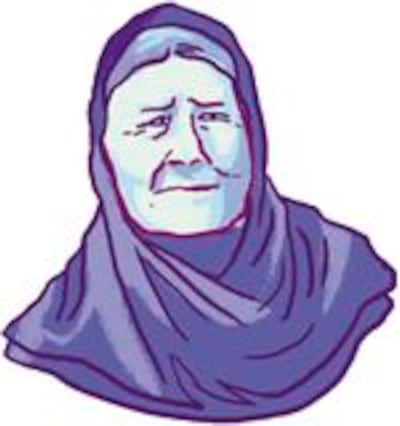
32. Peig Sayers (1873-1958)
Peig's Bay, Blasket Islands, Co Kerry
Don't shriek: generations of children may have been made miserable by enforced study of Peig's gloomy autobiography, but times were pretty grim back then, and it wasn't always the best-taught class in the curriculum. Alongside the book for which she is famous, Sayers also dictated 350 legends and folk and ghost stories to the Irish Folklore Commission, preserving a rich tradition and times now otherwise lost.
33. Méiní Dunlevy (1876-1967)
Statue, Blasket Islands, Co Kerry
Born in the United States, Méiní Dunlevy was raised in Dunquin by her grandparents. Eloping to the Blaskets to marry an islander, she became a nurse and midwife there. A forthright and by all accounts "spicy" woman, she was responsible for the lives and health of the islanders on this tough outpost. Her life is recounted in the book Méiní the Blasket Nurse, and her statue will also stand for the hard, and often unsung work, performed by all nurses, everywhere.
34. Maude Delap (1866-1953)
Delap Bay, Valentia Island, Co Kerry
Born in Donegal, Maude Delap grew up on Valentia Island, where her intelligence was somewhat stifled by her clergyman father, who pronounced "no daughter of mine will leave home, except as a married woman". She set up a lab at home, and published scientific articles. The first person to breed jellyfish in captivity, she also collected specimens for the Natural History Museum in Dublin.
35. Eibhlín Dubh Ní Chonaill (1743-1800)
Statue, Derrynane, Co Kerry
One of 22 children, married at 15 and widowed six months later, Eibhlín Dubh Ní Chonaill then eloped with the dashing Capt Art Ó Laoghaire. Six years on, his horse returned alone; he had been shot. The pregnant Ní Chonaill galloped back to find his body. It is said she symbolically drank his blood, and in her rage and grief she composed Caoineadh Airt Uí Laoghaire. Since translated by writers including Eilís Dillon, it is one of the greatest elegies any language has produced.
36. Veronica Steele (1947-2017)
Statue, Eyeries, Co Cork
Ireland is awash with artisan cheeses, but back in the 1970s it was a different story. Working with her husband, Norman, Veronica Steele created Milleens, to preserve excess milk, and bring jobs to rural Ireland. Some cheese was already being made on a domestic scale, but Steele put it on the international map when Milleens got a rave review from the Observer's food critic . Her family continues the tradition.
37. Patricia Cockburn (1914-1989)
Statue, Youghal, Co Cork
Artist, photographer, writer, explorer, horse rider (until she broke her back) and debutante, Patricia Cockburn lived most of her life in Youghal. She travelled to central Africa on behalf of the Royal Geographical Society to map the dialects of the tribes of the Congo.
38. Agnes Clerke (1842-1907)
Statue, Skibbereen, Co Cork
Nasa may have named a crater on the moon in her honour, but Agnes Clerke doesn't yet have a statue in Ireland. At 15, the home-schooled Skibbereen-born astronomer borrowed her father's telescope to begin writing a history of the subject. Books on astrophysics and theories of the evolution of the universe followed. She was finally made an honorary member of the Royal Astronomical Society in 1903. Women wouldn't be admitted as full members until 1916 – too late for Clerke.
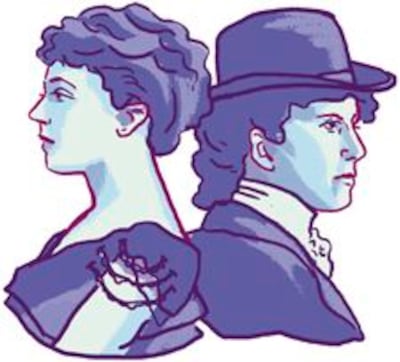
39. Edith Somerville (1858-1949) and Violet Florence Martin (1862-1915)
Castletownshend, Co Cork
Writing as Somerville and Ross, these cousins became lifelong companions and writing partners, responsible for the enduring Irish RM books – later televised starring Anna Manahan, Peter Bowles and Bryan Murray. Martin was a committed suffragette. Somerville was also an artist and farmer; she brought the first Friesian cattle to Ireland.
40. Margaret Anna Cusack (1829-1899)
Statue, Kenmare, Co Kerry
Margaret Anna Cusack first joined an Anglican order, then converted to join the Catholic Poor Clares. A prolific writer and passionate fundraiser, she distributed £15,000 in Famine relief in 1871. Pope Leo XIII honoured her, but then the Vatican effaced her from history in response to her social-reformist views. She eventually left the Catholic Church. Cusack Corner in Dublin was named for her in 1998, but she also deserves a statue in the place where she first became known as the Nun of Kenmare.
With thanks for contributions and ideas from Louise Allen, Ciaran Benson, Jean Callanan, Martin Doyle, Sarah Farrell, Bernice Harrison, Alannah Hopkin, Manchán Magan, Catherine McGuinness, Deirdre McQuillan, Gina Moxley, Ann Mulrooney, Patrick Murphy, Liz Norris, Sheila Pratschke, Vivienne Roche, Sylvia Thompson, Keith Tipton, Gill Tipton, Grace Weir and Mary Weir. All illustrations by Dearbhla Kelly











